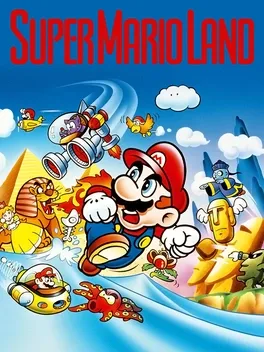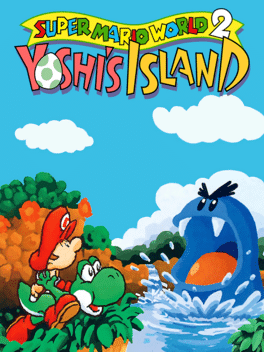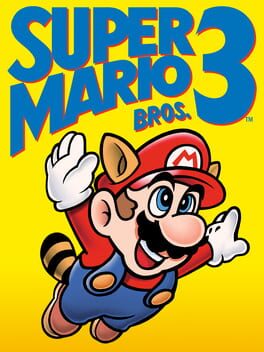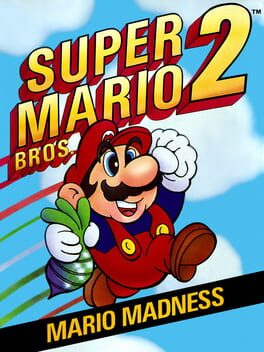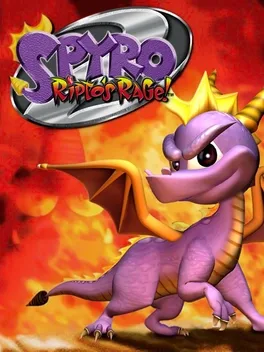(Originally published to Glitchwave on 5/7/2025)
[Image from glitchwave.com]
Super Mario Land 2: 6 Golden Coins
Developer: Nintendo
Publisher: Nintendo
Genre(s): 2D Platformer
Platforms: Game Boy
Release Date: October 21, 1992
To make itself discernible from its console counterpart, the Mario Land games deviate greatly from the tired tropes that tend to bog down mainline Mario with overuse. These familiarities include placing Bowser as the primary antagonist, and the executive heads at Nintendo told King Koopa to once again take a much-needed leave of absence for the second Land title. The first Land title supplemented Peach for Daisy to slightly spruce up the exhausted damsel in distress role, but the sequel here also extends Bowser’s mandated vacation time to any and all princesses. The conflict in Super Mario Land 2 instead stems from the shenanigans of a fresh-faced Wario, Mario’s sleazy, slovenly, and stinky anti-self doppelganger. Eventually, he’d become as iconic as the secondary Mario characters who are absent from this title, mostly due to the influx of Mario Parties and various sports games that feature the plumber and the rest of the Mushroom Kingdom’s finest. Here in his debut, Wario is but a rambunctious rascal who has somehow taken control over Mario’s estate located in the center of an island that Mario holds a deed to, or something of that sort. Again, starting further from Mario conventions with a new villain stirring up a totally new conflict is something I commend and encourage for any Mario title.
The recuperation process that Mario must undergo is finding the six golden coins alluded to in the title. Their value will not bring Mario opulent riches beyond comprehension, but rather, they are the keys that unlock the front entrance to Mario’s castle. Whether Wario hid these valuable trinkets for good measure after securing Mario’s property or Mario made his security measure as circuitous as possible cannot be confirmed, but they are the Macguffin rewards unlocked by finishing a world and its climactic boss. Before I discuss the meat of Super Mario Land 2 that is its levels, I feel obliged to detail the nifty way in which these levels are orchestrated. Super Mario Bros. 3 played around with the idea of letting the player select its levels in a non-linear fashion, but the range of selection was still rather restricted on the grid schematic. In Super Mario Land 2, the novel idea that the console Mario games were too reserved to fully flaunt extends its potential to something describable as freeform and nonlinear. Mario can conquer the six worlds and retrieve their circular keys in whichever order he pleases. While I would argue that some worlds provide a more substantial challenge than others, the fact that there are no arbitrary borders between them is exciting. The player can even visit the gambling house a limitless number of times to stock up on lives, provided they have at least a modest amount of coins to spare. The map may not be as expansive as any rendering of Hyrule, but I will accept any inkling of allowing player autonomy in any video game, no matter how small. It’s ironic how the mechanically diminished handheld is the one to unshackle the technical boundaries that limited its console equivalents.
The astounding advancements in the design of Super Mario Land 2 come as a total surprise, but what remains constant from the first game is the heightened creativity on display. The first Super Mario Land game took Mario on an Arabic-inspired journey that involved piloting mechanical contraptions that soared through the skies and swam in the seas above and below the standard platforming in between. It thrust Mario in a setting with scenarios he hadn’t undergone before, and it was a refreshing change of pace for a franchise that tends to be rather formulaic. Its sequel is equally as daring with setting Mario in uncharted territory, but it doesn’t stick to a cohesive theme. Instead, the creativity on display in Super Mario Land 2 is dispersed over the six “worlds.” Each major setting features its own individual themes that are totally unique from one another. “Tree Zone” involves Mario ascending up a colossal oak through its interior, using the sticky sap it excretes as an environmental tool to feasibly hop across wide platforms. Traversing through the inside of a gargantuan tree makes the player feel small, but the size-inverse of the fan favorite “Giant Land” from Super Mario Bros. 3 in “Macro Land” will definitely instill a sense of diminutiveness in the player as they stomp on ants that look big enough to eat Mario whole. When a sperm whale does consume Mario in the water world of “Turtle Zone,” the dank, claustrophobic interior anatomy of the giant sea mammal is quite sublime. It’s no wonder that the Zelda series keeps returning to this fantastical setting, and Mario had already beaten them to the punch. “Pumpkin Zone” plays on my penchant for Halloween-themed levels, but I’m also partial to the lighthearted whimsy of toy-themed levels that comprise “Mario Land.” “Space Zone” seems more separated from the rest of the locales on the map because the trip to it is a level in itself. Still, I suppose it makes sense that a setting located inherently outside the planetary atmosphere would require additional steps to arrive there. Mario’s first venture to the dark depths of space here still evokes that feeling of wonder as his future title, whose entire theme centered around the infinite realm of the cosmos. It goes without saying, but the diversity that Super Mario Land 2 bestows in its level themes is delicious, offering the same range of setpieces as Super Mario Bros. 3 without dipping into any cliches.
However, the number of levels per world in Super Mario Land 2 is unfortunately inconsistent. For some reason or other, some worlds are blessed with five or six levels, while others are given a piddly two or three. One would think the worlds with the smaller level selection would compensate with length, like the songs of a progressive rock album, but they should ideally take the same amount of time to complete. The uneven level distribution probably wouldn’t be an issue if not for the fact that the game is an overall walk in the park, another promising theme for one of the game’s worlds, if it didn’t overlap with each one that was actually included. Add to the fact that extra lives can be stocked in bulk thanks to the end-of-level crane games and the abundance of coins for the slot machine, and Super Mario Land 2 is practically carrying the player to the finish line on a palanquin. Or, at least that’s the impression that I got for the majority of the game. Once all six coins were collected and I was faced with the final level of Wario’s domain, it was the point when this puppy started to gnash its fangs like a wolf. It’s perfectly sensible that the final level should be the apex challenge in any game, but it seems as if Super Mario Land 2 has allocated all traces of difficulty to the final level and the final level alone. Wario must be a master technician in the field of booby traps, for this castle is rigged with battalions of piranha plants shooting waves of fireballs at every angle, giant magnetic balls whose pendulous swing cramps the space of the screen, and platforms between calamitous pits of lava that are so slim that they’re practically spires. The cherry on top of this brutal sundae is the fact that the game doesn’t offer any checkpoints, so one hasty move will send the player right back to the entrance. I suggest that everyone stock up on lives like people stash toilet paper in the event of a pandemic, for it's the only way of ensuring enough trial and error before all of Mario’s lives exhaust in attempting to surpass this demanding excursion. Fortunately, the fight against Wario that follows does not feature the same complications as the journey to his chamber. He’ll copy Mario’s fire flower and bunny-eared glide move, but he’s too predictable in his attack patterns. Perhaps he wouldn’t move so sluggishly if he had some self-control with his food intake, eh? All the same, I’m glad I never had to test whether or not starting the fight finally signaled a checkpoint for this godforsaken finale.
It may still be in black and white, but Super Mario Land 2 is anything but minimal. Admittedly, I see cuts in the game with the brief length of its levels as evidence, but let’s not dwell on its shortcomings in a literal, technical sense. The first Super Mario Land strived for creativity to make itself stand out among its more mechanically gifted peers in lieu of being unable to compete with their more advanced hardware. Super Mario Land 2 broadens the first game’s initiative in spades with its extensive range of level designs, but I’d argue that some aspects, like its freeform level design, outclass the parameters of the console Mario games. Hell, the final level made me sweat profusely at every step, but the fact that the steepest Mario challenge is on a handheld title is telling that there is a hidden strength behind Super Mario Land 2 that the console games lack. In an objective sense, Super Mario Land 2 is still undermined by the Game Boy’s limitations, therefore making it ultimately inferior. Still, the fresh content that the first Super Mario Land title provided in a small sampler has been broadened to something more substantial in its sequel, giving the player enough to chew on to put it on a fairly equal plane with at least some of the mainline Mario titles. I’d rather experience something brimming with buoyancy that was marred by endearing cracks in its foundation rather than a well-oiled machine that offered the standard affair, and I’m certainly not alone in this sentiment.

